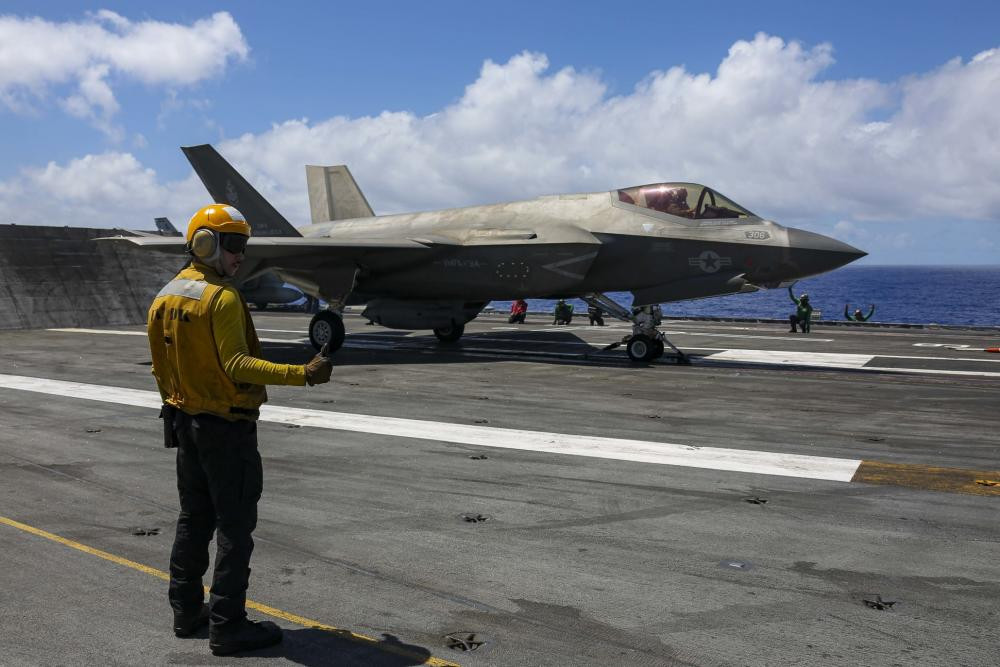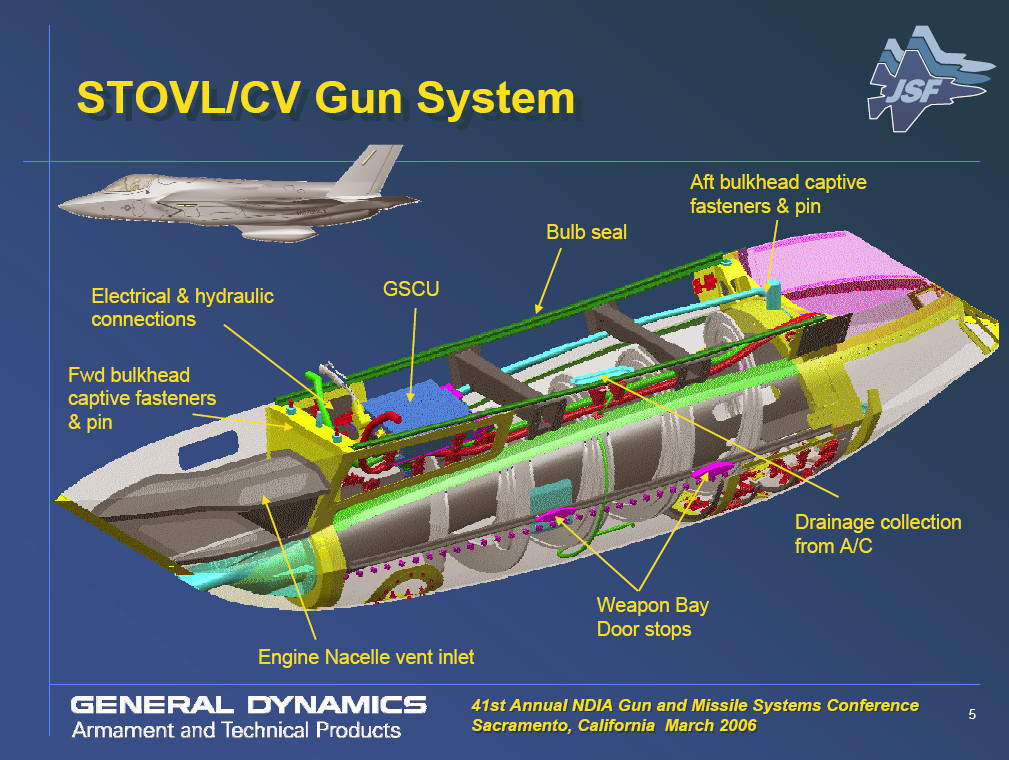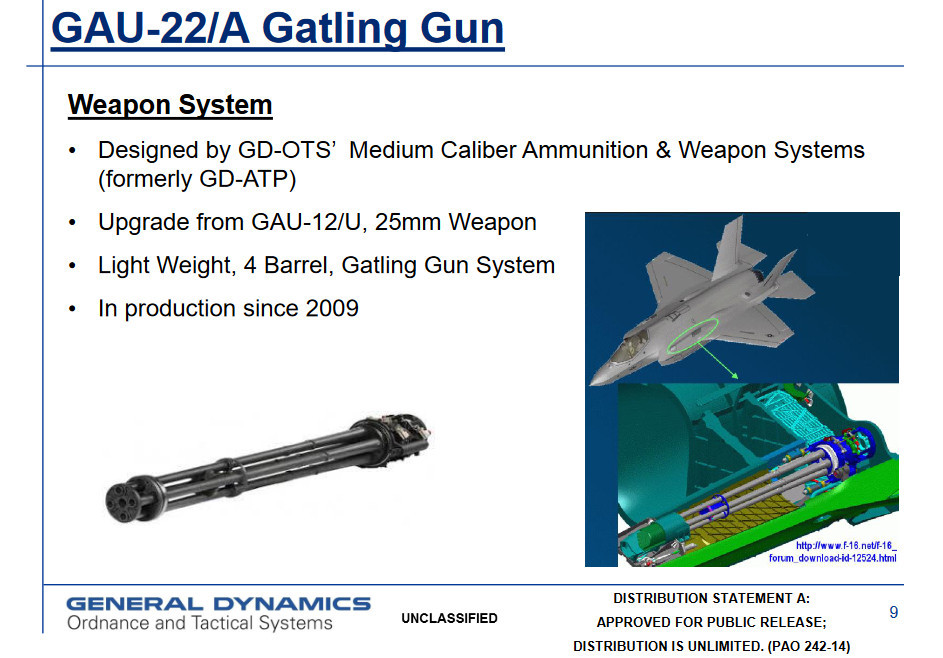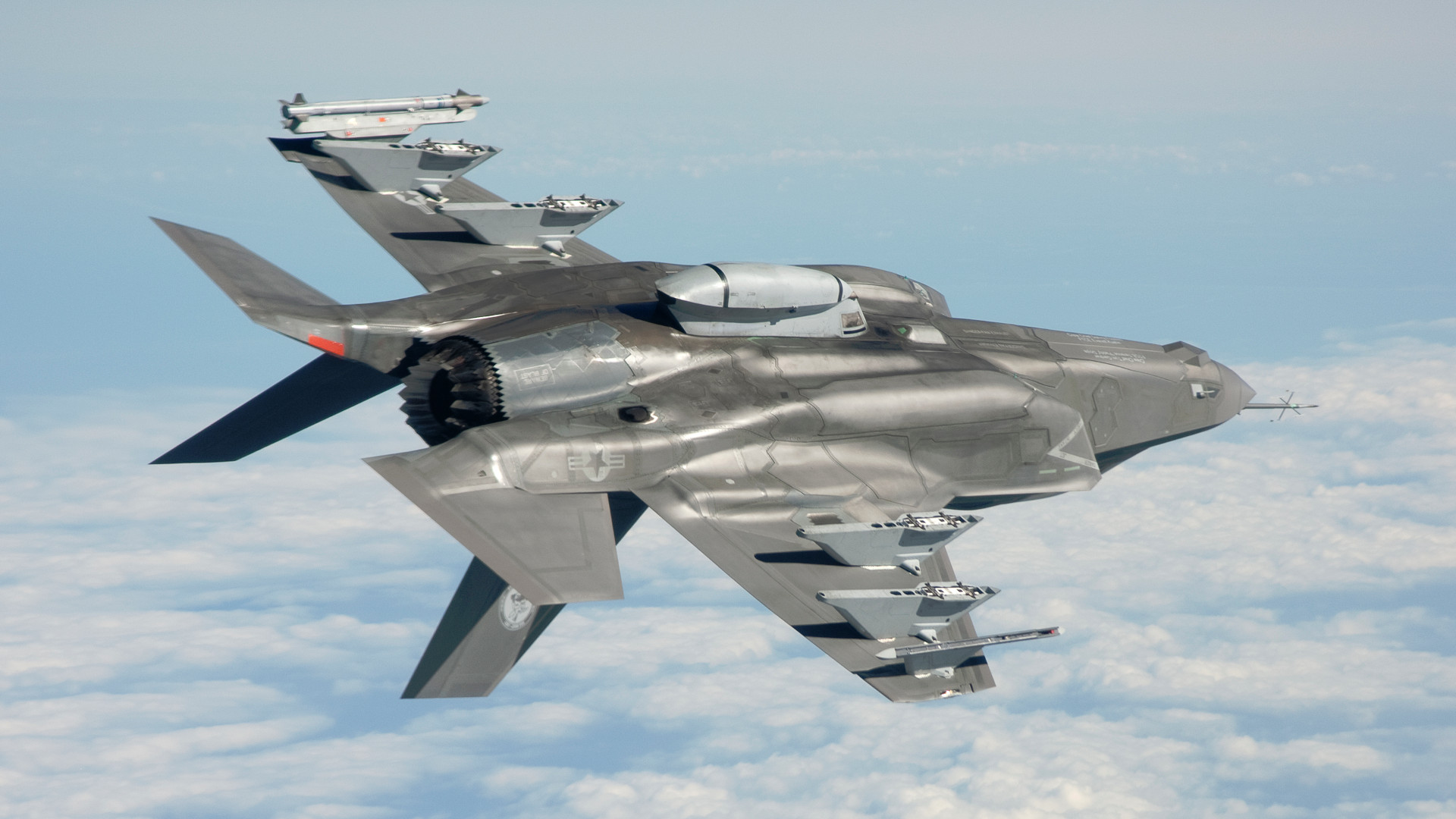It’s no secret that the B and C variants of the F-35 Joint Strike Fighter lack an internal 25mm cannon like the A version. Instead, they rely on belly-mounted pods to provide gun capability. What’s perhaps less well known is that the gun pods for the F-35B and the F-35C are not identical and are not interchangeable due to substantial structural differences between those aircraft.
The fact of the existence of F-35B and F-35C-specific gun pods – designated GPU-9/A and GPU-8/A, respectively – is highlighted in a recent U.S. military contracting notice about plans to purchase more of both types from General Dynamics. Both pod types contain a single four-barrelled 25mm Gatling-type GAU-22/A cannon and 220 rounds of ammunition. Some sources have previously described the GPU-8/A as a 30mm gun pod developed for the F-16-series, but this appears to be a case of confusion with the GPU-5/A pod and its GAU-13/A derivative of the famed GAU-8/A Avenger cannon found on the A-10 Warthog.

A heavily redacted declassified copy of a report on the Joint Strike Fighter program that the Project on Government Oversight (POGO), an independent nonprofit, obtained and published back in November further confirms that there are two pods and they are not interchangeable. The Pentagon’s Office of the Director of Test and Evaluation produced the report, which is dated February 2024.
“A podded version of the GAU-22/A is available for the F-35B and F-35C, which is externally carried on the centerline station of these aircraft,” an unredacted portion of the report states. “Differences in the outer mold-line fairing mount make the gun pods unique to each variant (i.e. an F-35B gun pod cannot be mounted on an F-35C aircraft).”


As already noted, the GPU-8/A and the GPU-9/A do both contain the same gun and the same amount of ammunition. From available pictures, outwardly the two pods look virtually the same, but beyond that, what the total level of commonality between them might be is unclear. The War Zone has reached out to the F-35 Joint Program Office (JPO) for more details.


The podded guns do appear to have largely escaped the serious problems the internally-mounted GAU-22/A has faced over the years. Issues linked to the helmet-mounted displays (HMD) that pilots use when flying all F-35 variants have impacted gun effectiveness across the board in the past, but are said to have been resolved. You can read more about F-35A’s gun-related woes here.
A U.S. Marine Corps F-35B was damaged in 2021 after a 25mm shell exploded shortly after leaving the muzzle of its podded gun, but the exact circumstances behind that mishap are unclear. That same year, another Marine F-35B, operating from the Royal Navy’s carrier HMS Queen Elizabeth at the time, reportedly landed at Kadena Air Base in Japan due to unspecified issues with its gun pod.
If nothing else, the fact that there are two gun pods for the F-35 series highlights the significant differences between the B and C variants, as well as the A model. There is only approximately 20% parts commonality between the three versions of the Joint Strike Fighter despite their external looks and shared development. The short takeoff and vertical landing capable F-35B is particularly unique with its integrated lift fan, articulating exhaust nozzle, and substantially lightened core structure, as well as its internal weapons bay that’s smaller than either the A or C. The B’s design also necessitates the inclusion of an automatic ejection system that you can read more about here.

The variant-specific gun pods also underscore the maintenance, logistics, and sustainment issues caused by the very limited commonality between F-35 variants. The lack of interchangeability means that units flying F-35B and Cs notably cannot leverage a common pool, at least when it comes to complete pods.
The War Zone has previously explored in great detail extremely worrisome spare parts and related supply chain issues facing the F-35, exacerbated by differences in the three versions, which could have serious operational impacts, especially during a sustained high-end fight in a vast battlespace. The often convoluted nature of the logistics ecosystem around the Joint Strike Fighter has created hurdles even for exercises and other routine peacetime deployments. The U.S. military is well aware of these issues, but has long struggled in addressing them.
In the meantime, the Pentagon will have to contend with the realities the differences between the F-35 variants impose, including the fact that they all have unique gun systems.
Contact the author: joe@twz.com
